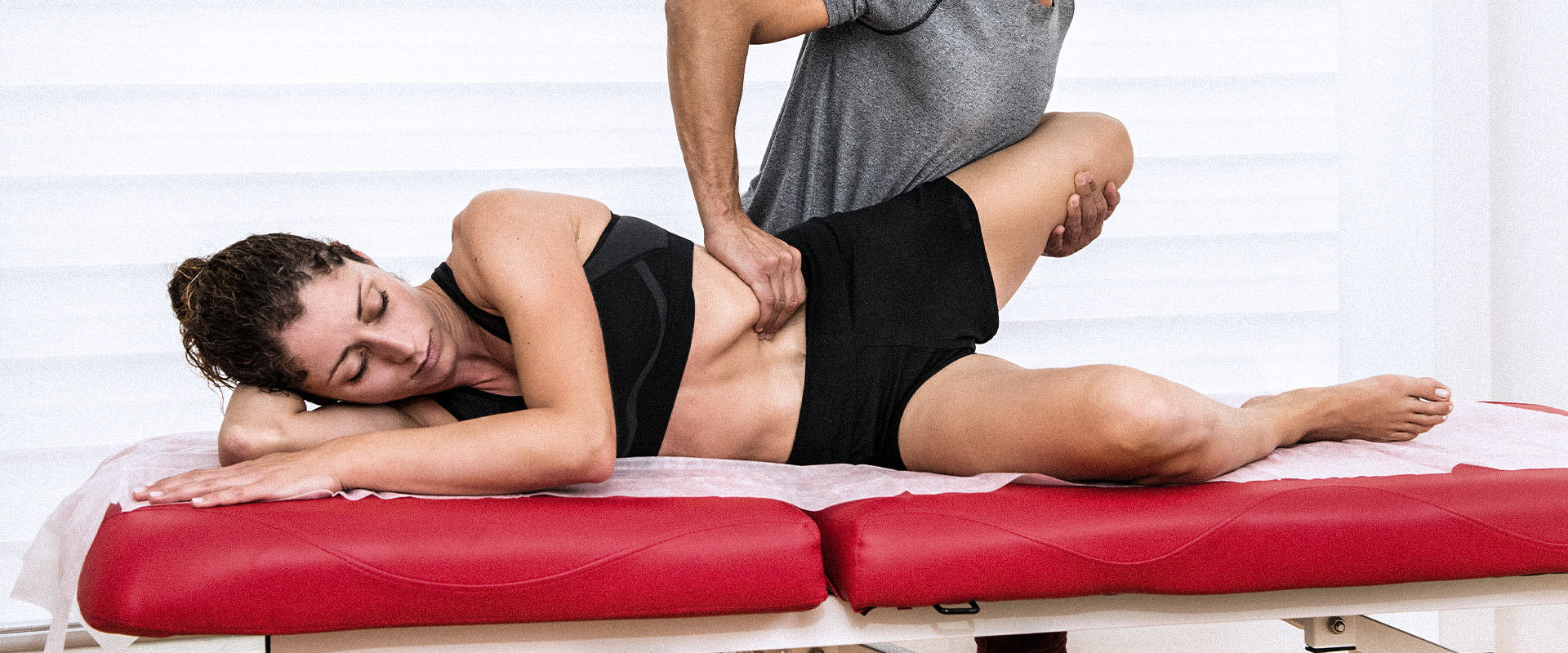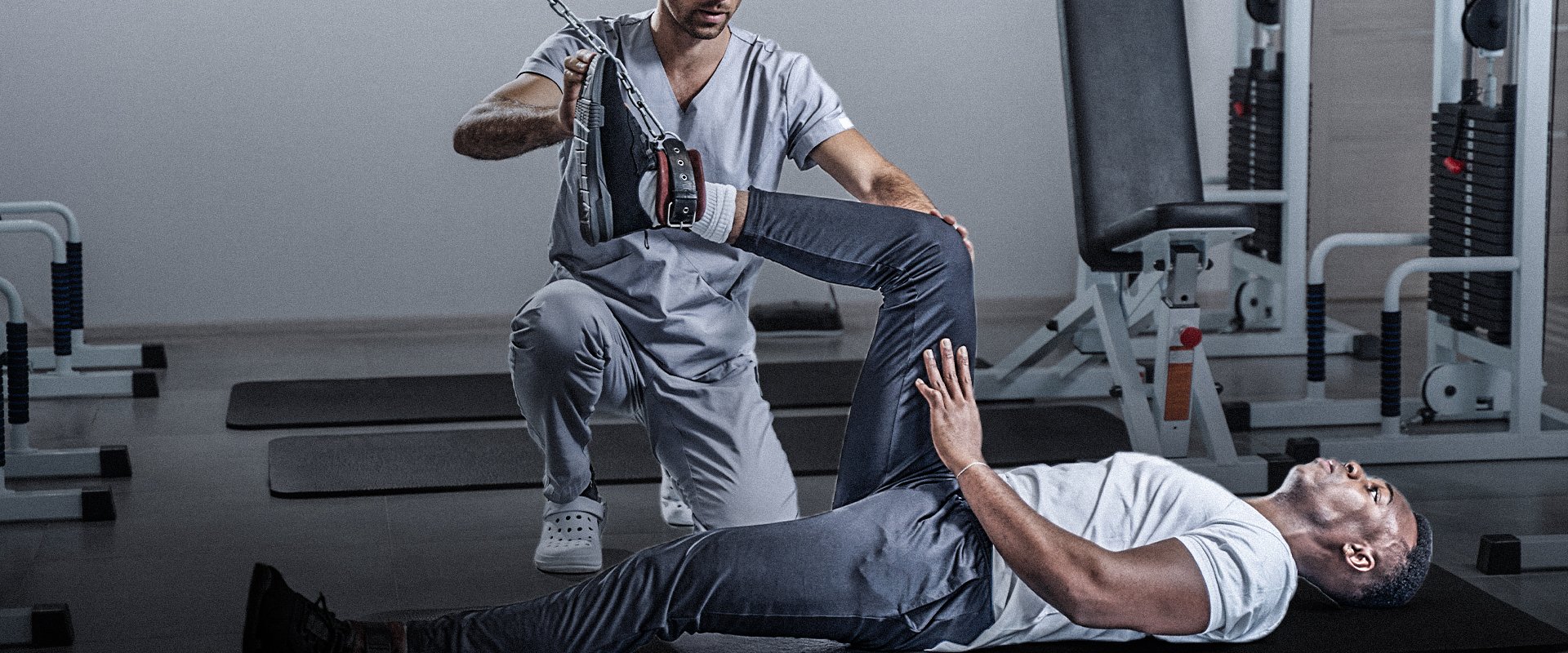
Physical Therapy for Labral Tears
AT EVOLVE
Physical Therapy for Labral Tears
HOW CAN PHYSICAL THERAPY HELP MANAGE SYMPTOMS OF A LABRAL TEAR?
Learning you have a labral tear in the hip can be disconcerting and you may be wondering what treatment options exist for you. While surgery may be presented as a potential treatment option, conservative and nonsurgical options like physical therapy help many people manage the symptoms of a labral tear nonoperatively. While physical therapy cannot heal the tear itself, many people live with asymptomatic labral tears and in many cases physical therapy can help relieve symptoms of pain and stiffness while restoring normal motion, strength and flexibility so you can get back to the activities you need and love to do.
WHAT DOES PHYSICAL THERAPY FOR A LABRAL TEAR LOOK LIKE?
The hallmark of a good physical therapy program for disc herniation is that it is individualized. My team of therapists and I will always start by getting to know your concerns and goals and performing a thorough physical exam to look for the cause or contributing factors to your symptoms. With all of this knowledge in hand, we will create a custom program that may consist of hands-on techniques performed by our therapists to your spine and nearby areas combined with carefully prescribed movements and exercises performed by you in the clinic and at home.
HOW LONG WILL I NEED PHYSICAL THERAPY?
The duration of your physical therapy plan of care will vary depending on how acute your symptoms are, what underlying factors need to be addressed and the types of activities you aim to resume. While full resolution of symptoms can take some time, you may begin to see some results right away. You should experience improvements in many symptoms such as pain, stiffness, and inflammation within a couple of weeks but returns in strength, flexibility and overall mobility may take longer. Achieving long lasting results may take some time, but dedication to your program will not only help you achieve these results but will help to decrease the likelihood of symptoms recurring in the future.
ANATOMY OF A LABRAL TEAR
Understanding the anatomy of the hip and the labrum can help shed light on why these injuries occur and how physical therapy can be beneficial in addressing them. The hip joint is a ball and socket joint. The head of the femur is the ball and the acetabulum of the pelvis is the socket. The structure of a ball and socket joint allows for multiplanar movement of the hip. Hips can flex forward and extend backwards, rotate inwards and outwards and swing out to the side and in toward the middle along with any combination of these movements. The high degree of mobility in the hip joint allows you to perform all of the different movements you do with your legs throughout the day.
The labrum is a cartilaginous ring that lines the outer rim of the acetabulum. The labrum not only creates a seal around the joint but provides stability and shock absorption and assists in creating smooth movement between the head of the femur and the acetabulum. In some instances, the labrum can tear away from the bony structure underneath. Sometimes this tear goes unnoticed and remains asymptomatic, only to be discovered incidentally on imaging for an unrelated issue. Other times, however, stress applied across the area of the tear can result in the classic symptoms of a labral tear.
WHAT CAUSES THE LABRUM TO TEAR?
In many cases labral tears are considered a repetitive stress injury. This means stress applied repeatedly over time has weakened the structure of the labrum which eventually leads to the tear. Some examples of repetitive movements that may lead to a labral tear are as follows:
- Running.
- Cutting.
- Twisting.
- Deep squatting.
Additionally, there are other many other factors that may contribute to the development of a labral tear in the hip such as these:
- Bony abnormalities on either side of the joint (hip impingement).
- Hip muscle weakness.
- Decreased coordination and motor control around the hip joint.
- Improper biomechanics with repetitive movements.
End Injury Progression
Physical therapy for labral tear has proven to slow and even stop back pain issues and injury progression in many cases.
Relieve Pain
The movements used in this technique can target your lower back, upper back, hips, shoulders, and neck helping you to manage pain during the course of your physical therapy treatments.
Improve Range of Motion
Posture awareness is an important area to focus on due to the fact that certain positions may cause you further back pain.
Restore Mobility
You can gain mobility and flexibility by taking part in the stretches and exercises as prescribed by your physical therapist.
How Long Will Labral Tear Physical Therapy Treatments Last?
If you decide to work with a physical therapist to help correct your labral tear issues, your entire treatment plan could consist of around 8-20+ different physical therapy for back pain sessions that will each last 60-90 minutes. Once you complete your customized back pain physical therapy treatment plan, you will be able to continue to do the prescribed stretches and exercises utilized during your back pain PT sessions yet in the comfort of your own home.
WHAT ARE THE COMMON SYMPTOMS OF A LABRAL TEAR?
Signs and symptoms that are suggestive of a labral tear are as follows:
- A deep ache in the front of the groin, often worse upon standing and initiating walking
- Painful pinching or ache with deep squatting
- Pain with end range flexion and internal rotation of the hip
- Painful clicking or catching in the hip
- Stiffness in the hip
- Feelings of weakness or instability around the hip
A person with a labral tear may experience symptoms:
- Never
- Only with certain movements or activities
- In recurrent bouts with resolution of symptoms in between
- Constantly
The frequency and intensity of symptoms often plays a role in whether someone chooses to seek care. A tear that is rarely symptomatic or only during activities that are easily avoidable may not warrant treatment, however, if symptoms are impacting daily life and function it is time to seek out help from your local physical therapist.
PHYSICAL THERAPY AS A TREATMENT FOR LABRAL TEAR
It is important to acknowledge that physical therapy cannot repair the tear in the labrum. In fact the labrum does not heal itself. In cases of large tears, very symptomatic tears and those that have not responded to physical therapy, surgical intervention to either trim or repair the labrum may be indicated. Following this kind of surgery there is often a period of modified weight bearing followed by several months of physical therapy to help the tissues heal and facilitate a return to full activity.
A course of physical therapy with a skilled therapist is almost always indicated before trying surgery. By addressing modifiable risk factors to lessen stress and loading across the site of the tear, many people experience symptom relief and can return to their former activities. Here are some of the ways physical therapists treat a labral tear:- Improve strength, motor control and coordination in the muscles surrounding the hip joint to decrease stress across the tear.
- Optimize mobility in the hip joint and adjacent joints to decrease stress and loading across the tear.
- Address errors in biomechanics or discuss modifications to movement patterns to decrease load across the injury site.
- Discuss training type and schedule to decrease symptom intensity and frequency.
- Advise you on how to gradually return to activities that were previously problematic.
Call to Schedule a Consultation! 1-718-258-3300
Mill Basin (located in Harbor Fitness)
6161 Strickland Ave
Brooklyn, NY 11234
Monday: 7am-8pm
Tuesday: 7am-8pm
Wednesday: 8am-5pm
Thursday: 7am-8pm
Friday: 8am-1pm
Park Slope (located in Harbor Fitness)
550 5th Ave.
Brooklyn, NY 11215
Monday: 9am-8pm
Tuesday: 8am-6pm
Wednesday: 9am-8pm
Thursday: 8am-6pm
Friday: 8am-3pm
Gravesend
372 Avenue U
Brooklyn, NY 11223
Monday-Thursday: 8am-8pm
Friday: 8am-3pm
Midwood
945 Kings Highway
Brooklyn, NY 11223
Monday-Thursday: 12pm-8pm
Ready to take the next step to a healthier you?
Contact Us Today!
PHYSICAL THERAPY FOR LABRAL TEARS AT EVOLVE!
Need Physical Therapy for a Labral Tear?
Let our caring and compassionate physical therapists help you with relieving pain while getting you back on your feet comfortably.
Call now to schedule your first PT consultation free of charge.
Call: 1-718-395-6551







